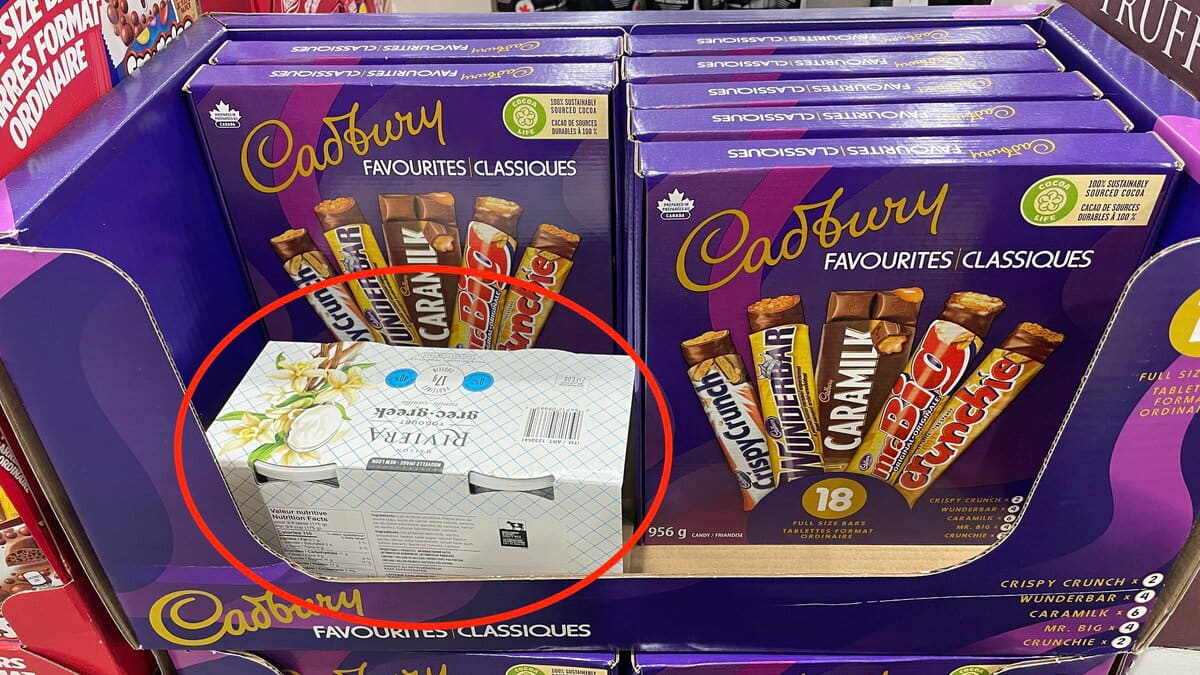While groceries cost more than ever, busy or lazy customers leave products they no longer want anywhere on the shelves, a practice that merchants denounce and which contributes to driving up prices.
A tour of Newspaper in several grocery markets has shown that customers do not always take the trouble to retrace their steps when they remove an item from their basket.
“It happens so often. “It’s certain that we will have to throw away the yogurt because it is no longer cold,” confided a clerk at a big box store in Quebec.
The representative of Newspaper had just informed him that a package containing two containers of yogurt had been left near the chocolate bars, therefore very far from the refrigerators.
“If someone does not take the time to go and replace a product that needs to be refrigerated or frozen, in my opinion, that is a lack of civil responsibility. The repercussions are still quite significant. The costs are already increasing. It adds to the losses,” says Sylvain Charlebois, full professor at Dalhousie University in management and agriculture.
Grocers did not hesitate to speak of a “scourge”.
In an inflationary context, “it is certain that we notice it much more,” adds Mr. Charlebois, saying that this phenomenon is not new.
- Listen to the interview with Samuel Bouchard Villeneuve, director of public affairs at the Association of Food Retailers of Quebec via QUB:
Worrying situation
The Association of Food Retailers of Quebec (ADAQ) assures that this practice is a source of concern among its members.
“Certain refrigerated or frozen products can no longer be sold since we cannot know whether the cold chain has been broken, which contributes to food waste. We cannot play with food safety. It’s the health of customers,” declared Samuel Bouchard Villeneuve, Director of Public Affairs for ADAQ.
Samuel Bouchard Villeneuve, Director of Public Affairs for the Association of Food Retailers of Quebec (ADAQ). (Photo provided by ADAQ)
Photo provided by ADAQ
According to him, the situation varies among retailers.
“Some notice an increase while the problem has been the same for several years for others.”
The ADAQ brings together retailer-owners who operate with very tight profit margins, he emphasizes.
“We talk about 2% when things are going well. When things go bad, they lose money.”
Spontaneous decision
Mr. Charlebois maintains that a large part of purchases made in grocery stores result from spontaneous decisions which are mainly influenced by the discounts that customers notice in store.
Consumers met by The newspaper unanimously denounced this behavior.
“We sometimes change our minds, but we will postpone the products. We don’t leave them everywhere. We make great efforts to put them in the right place. It’s a question of civics,” said Francine and Jean-Guy as they left the Walmart Lebourgneuf.
“This kind of behavior has no place. There are enough people lacking food. It scandalizes me. We’re already paying attention to everything we buy,” shares Claire Chabot, when she comes out of the same store.

In the bulk section of a Walmart in the Quebec region, we found POM tortillas and snack foods with dried mangoes.
Photo Diane Tremblay

In this photo, we see a sliced multigrain bread abandoned on the apple crisp shelves in an IGA in the Quebec region.
Photo Diane Tremblay

Non-perishable products, which are left in the aisles, can be resold. But this still causes a waste of time for grocers. Here, in a Walmart in Quebec, cans of tomatoes left in the chips section.
Photo Diane Tremblay

According to the Association of Food Retailers of Quebec (ADAQ), the abandonment of products by customers who change their minds is a source of concern among grocers since it causes waste of time and money. In the photo, a jar of spices that goes unnoticed alongside cans of Pepsi in a Walmart in Quebec.
Photo Diane Tremblay
A new way of thinking about grocery shopping
One of the independent players in Quebec, Pasquier, took advantage of the opening of a 90,000 square foot store in Delson, in Montérégie, two and a half years ago, to review the marketing of products from A to Z to prevent losses associated with products abandoned en route.
“We analyzed consumer behavior a lot in our Saint-Jean-sur-Richelieu store before opening the Delson store,” said Annie Paquette, general manager, retail operations.
For example, instead of offering juices in different locations in the store, the Pasquier grocery store in Delson has all types of juices (fresh, frozen and in cartons) in the same aisle.
“Often, I would walk through my store in Saint-Jean and I would find refrigerated juice next to the dry juice,” recalls Mme Paquette.

Annie Paquette, General Manager Office Head, Retail Operations, Pasquier grocery stores. (Photo provided by Pasquier)
Photo provided by Pasquier
“In a big box store like ours, people may not take the time to return a product to where they took it. In a clothing store, there is no consequence, but in the grocery store where we work with perishable products, when the cold chain is broken, it causes a direct loss for the merchant. The product is thrown away and therefore wasted.”
Another innovative example was to group frozen fruits and vegetables with fresh produce.
“This is not done anywhere else in Quebec. […] We make it easier for customers to make decisions. If I need cauliflower to make a soup, it doesn’t matter whether it’s fresh or frozen. The customer can make the decision in the same environment. So, we find a lot fewer products everywhere in the store,” she continued.
The efforts were worth it because the results were there. This new approach has been well received by customers, says Mme Paquette.
